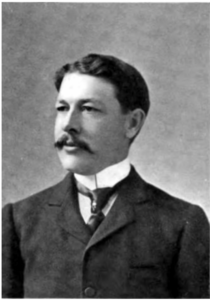As I mentioned in my previous article titled “Lessons Learned from Managing Fever with Desert Iguanas” there is an inverse relationship between the number of fevers a person has had and the likelihood that they will get cancer.
Taking this concept one step further, fevers can be an effective alternative treatment for cancers. This concept was first documented by professor Wilhelm Busch (1861-1929). He observed and reported a case of head and neck sarcoma that resolved after an erysipelas infection. Having observed this, he went on to treat a 19-year-old girl with a large sarcoma of the neck using soiled dressings from an adjacent patient with a severe erysipelas infection. She experienced a dramatic reduction in the size and density of her tumor.
Around this same time, William Coley MD (1862-1926), who was head surgeon at Memorial Sloan Kettering, treated a large unresectable neck sarcoma with the erysipelas bacteria. This caused his patient to develop a fever over 1040, and at the end of 2 weeks Dr. Coley noticed the neck tumor was no longer visible. Four years later his patient was still doing well. This dramatic response led him to continue this alternative cancer treatment on patients, publishing his early experiments in 1893 in the American Journal of Medical Science article “The treatment of malignant tumors by repeated inoculations of erysipelas”.

Dr. William Coley, father of Immunotherapy for cancer
Over a period of 40 years, Dr. Coley continued this approach, as did many other doctors who reported excellent results in bone and soft tissue cancers, which are difficult to treat even today. Coley’s stage 4 sarcoma patients had 5+ years survival rate. Today with current standards of care, the survival rate is not nearly that high. Despite his success in using this immunotherapy as a cancer treatment method, the FDA listed Coley’s method as an unproven cancer therapy in 1965.
Despite the FDA actions, research in using fever induction therapy as an alternative treatment for cancer continued in Germany and Switzerland. One such therapy that has emerge is the use of mistletoe injected either subcutaneously or intravenously.
Mistletoe therapy for cancer has been shown to have the following effects:
- Acts like a fever-inducing therapy similar to Coley’s toxin.
- It increases the number and activity of immune cells
- It has direct cytotoxic effects on cancer cell membranes and cyto-skeleton, thus inducing cell death.
- Impacts platelet aggregation and inhibits metastasis.
- When used in conjunction with chemotherapy, immunotherapy or radiation, it minimizes the side effects while maximizing their killing effect on cancer.
- Can prevent cancer recurrence.
- Patients notice improved quality of life with more energy, less pain and a better outlook on life.
In cases of advance cancer, mistletoe therapy is used as a palliative treatment where at least 50% of patients find improved quality of life. Many patients go from being disabled and terribly sick to being active and functional, and this can last for months to years, even in the face of a terminal prognosis.
Today, mistletoe therapy is considered “the most well studied integrative cancer therapy in the world, with 75-85% of all European cancer patients utilizing this medicine.” In time, this will be the standard of care in the US, as Johns Hopkins School of Medicine has concluded a phase 1 trial that showed it was a safe therapeutic modality. They are currently in the midst of phase 2 trial, which will determine the effectiveness of this therapy.
At Renaissance Health Centre we have been offering alternative treatments to cancer patients for over 5 years. Please get in touch with us at (702) 258-7860 if you would like to learn more about our integrative medicine.
Next month I will be discussing another type of ‘heat therapy’ known as hyperthermia.
Terry Pfau DO, HMD
